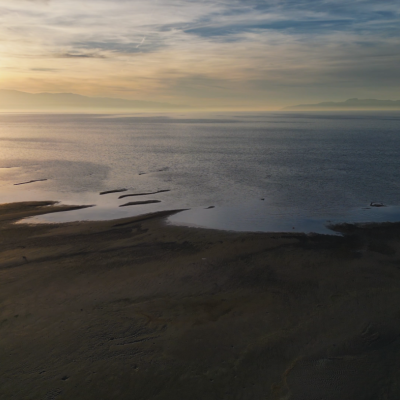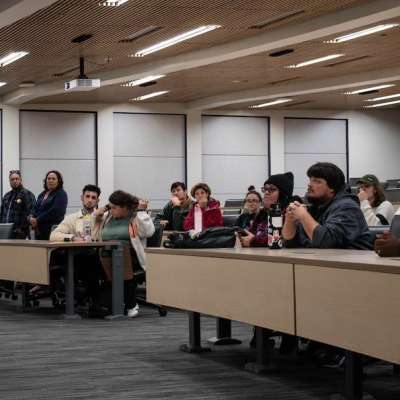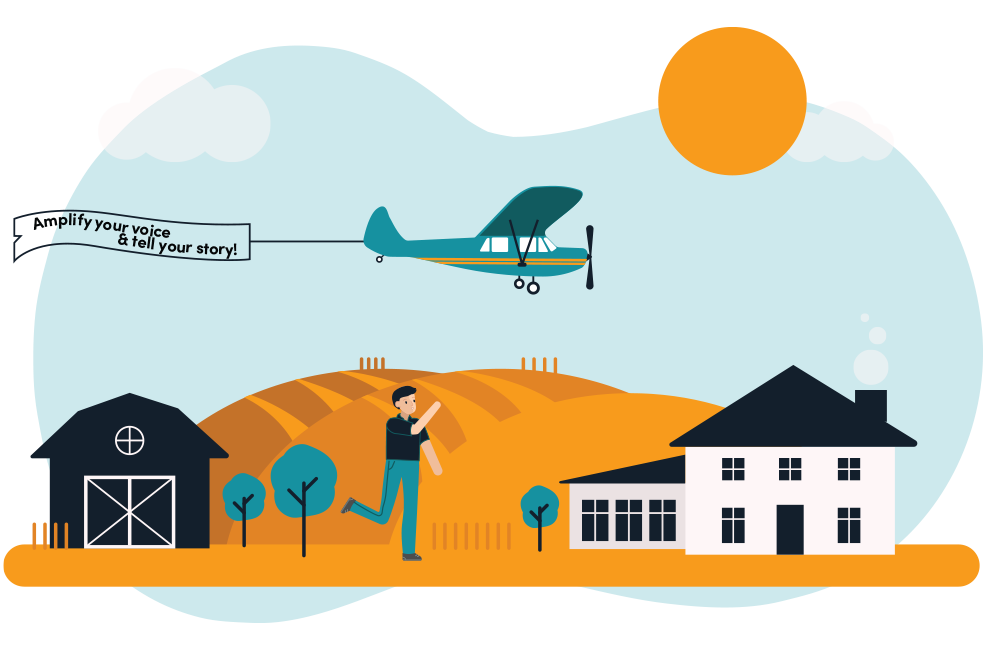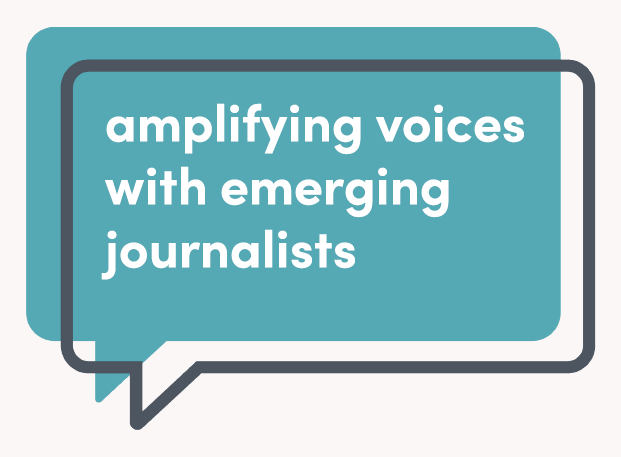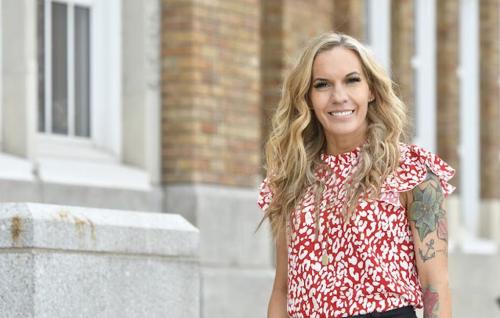On the east end of Salt Lake Community College’s South City campus, spanning a large section of the wall across from its multipurpose room, there hangs an acknowledgement of several of the largest Native American tribes in Utah.
Eight flags suspended in polished wooden frames herald the emblems of eight sovereign Indigenous nations. Behind the flags, a map of Utah hangs on the wall, behind a thin layer of protective glass. The map shows the regions of Utah where each nation is from, and where they exist today.
On SLCC’s Taylorsville Redwood campus, directly east of the student center, an expertly designed rock formation juts up towards the sky. Atop one of the red boulders is a raised plaque, in weighty bronze. An identical plaque hangs on the wall next to the map of the Utah nations in South City’s back hallway.
“Salt Lake Community College is located on the Native American shared territory of the Goshute, Navajo, Paiute, Shoshone, and Ute People,” both plaques read. “We honor the original ancestors of this land and also offer respect to our other tribal communities. We acknowledge this history to cultivate respect for and advocate with our Indigenous students and communities still connected to this land.”
Without Joseph Du Shane-Navanick, the plaques and their dedication wouldn’t exist. As part of his work in the college’s Office of Diversity of Multicultural Affairs, Du Shane-Navanick was directly responsible for the installation of the two land acknowledgements in early 2022.
His brother, Joey Du Shane-Navanick, has also held several vital positions within the diversity office, the college’s student association and the American Indian Student Leadership Club.
Together, the Du Shane-Navanick brothers work daily, they said, to ensure Native American heritage is recognized – and fostered – on SLCC campuses.
From reservation life to college
Joey and Joseph Du Shane-Navanick, twin brothers from the Northern Ute tribal band of Utah, trace their ancestors to the White River Ute band, which was forcibly consolidated over years of colonialist expansion and government treaties, they said.
The Uintah and Ouray Reservation, where the brothers grew up, covers much of the northeast region of Utah. It is an expansive piece of land, spanning more than 4.5 million acres and making it the second-largest reservation in the United States.
For the Du Shane-Navanicks, the road from reservation life to college was anything but straightforward, they said. Joey’s Vernal high school, he said, did not adequately guide or prepare him for the competitive college application process.
“No one told me to do extracurricular activities. No one even told me that good grades were part of it,” he said. “No one said, ‘Distinguish yourself, it’s a competition.’”
The University of Utah rejected his application, but Joey Du Shane-Navanick was determined to go to college. So, with the encouragement of the U.’s admissions office, he enrolled at SLCC.
“There really wasn’t another option for me,” he said.
Together, the brothers moved from the rural reservation to the bustling environment of Salt Lake City. They settled in an apartment near SLCC’s Taylorsville Redwood campus, and Joey Du Shane-Navanick started classes while his brother worked as a mechanic.
Something in the homework he brought home one night piqued Joseph Du Shane-Navanick’s interest, he said. His brother was taking a foundations of business with Prof. Ed Engh. Engh, as part of the curriculum, included a discussion of philosophy in the coursework.
That sparked an interest in business, Joseph Du Shane-Navanick said, and soon Joseph enrolled at SLCC, in the same program as his brother. But there were still adjustments to be made.
“The reservation life feels different,” Joseph Du Shane-Navanick said of the fish-out-of-water sensation the brothers experienced when first attending classes at SLCC.
“I’m not treated as a foreign thing [on the reservation],” Joseph Du Shane-Navanick said. “As [soon as] you step off the reservation, you get tokenized, or you get treated like a mystical person. I’ve gotten comments like, ‘I thought Native Americans were extinct,’ or, ‘Do they really have reservations still?’”
The uncomfortable conversations and lack of a community led the brothers to getting involved with SLCC’s diversity office and the American Indian Student Leadership club, they said.
‘The bare minimum’
Clashing cultural differences, like those experienced by the brothers after leaving their home, can be anxiety-inducing, Joseph Du Shane-Navanick said. Even the simplest of misunderstandings can make someone from a minority population feel uneasy, or worse, unwelcome, he said.
For instance, even introducing oneself is done differently in their Northern Ute upbringing, they said. When meeting someone new, both brothers were taught to say their first name, followed by their family name, and finally, that of their extended family.
“The thought is, you’re not only meeting me, but the people I represent,” Joseph Du Shane-Navanick said.
When meeting with other groups and leaders at SLCC, the Du Shane-Navanicks said they felt out of place during introductions and began explaining to classmates, peers, faculty and college staff their introduction style and the meaning behind it. Acknowledging these cultural differences, Joseph said, provides a place of acceptance among the majority voice and diversifies viewpoints of those at the table.
“[It’s] the bare minimum,” he said. “I would like to see diversity along with resources and calls to action. It’s important to understand different cultures, their perspectives and what they [actually] need.”
The brothers began engaging with other students and staff at the diversity office and promoting cultural recognition across SLCC campuses, from conference room tables to study hall desks, as part of their positions with the American Indian Student Leadership club.
Before graduating this spring, Joseph Du Shane-Navanick worked as a specialist intern to the director of the Office of Diversity and Multicultural Affairs, where he organized and taught lessons in an on-campus Brother 2 Brother program, a part of a national student organization designed to improve the educational experience for Native Indigenous, African American, Latino, Asian, Pacific Islander and other underrepresented students.
As program facilitator, Joseph Du Shane-Navanick said he leaned into his culture, incorporating a traditional Indigenous concept called the “medicine wheel” into his teaching. Split into four “slices,” the medicine wheel represents the mind, body, soul and the spirit of an individual.
For his purposes, Joseph Du Shane-Navanick said he used the medicine wheel to teach positive masculinity.
“It helps me teach what I’ve learned from my culture in a symbol that people will understand,” he said. “There are different parts to the medicine wheel, but it’s a whole thing, so it helps me teach wholeness, spirituality, as well as a person’s place in the world.”
Before graduating, Joseph Du Shane-Navanick served as president of the AISL club, where his brother is now vice president. The club had slipped into inactivity before the Du Shane-Navanicks first came to SLCC, and two years ago, they worked to re-establish the club on campus.
Now open to all, the club offers a space where Indigenous students and faculty can discuss their different cultures and heritages. The club also educates those at the college more broadly about Indigenous peoples in the Salt Lake Valley and on its campus.
Winter Rex, who works with the brothers as student success coordinator for Native American students at the diversity office, said the club helps Native students know there is a community for them at SLCC.
“When people think of Native Americans, a lot of people think of the past or think we’re not here anymore. But we are, and we’re normal people, too,” Rex said.
Diversity through respect and education
While plaques at the South City and Taylorsville campuses acknowledge SLCC sits on Native land, Rex and the Du Shane-Navanick brothers said they are working to expand this across the college and within the community.
Land acknowledgement, Rex said, has caught steam lately, both as a concept and a trend. However, it is not enough, she said, to simply read or hear once that SLCC sits on Native land.
“No matter where you are, you’re always on someone’s traditional territory,” she said. “Land acknowledgement means that you always know that you are on traditional territory. It’s in your everyday knowledge.”
Rex compared this type of understanding to a math formula that isn’t forgotten after the next test, but built upon with further knowledge.
Land acknowledgment, Rex said, should should include a study of history. By seeking to understand the persecution, exile and genocide Native Americans experienced in this country, she said, people are better able to gain a fuller picture of Native issues now.
Joseph and Joey Du Shane-Navanick said they hope to parlay their degrees — in political science and business, respectively — to create a better environment for students coming to SLCC from reservations.
The goal, Joey Du Shane-Navanick said, is to “create a pipeline for kids who want to come off the reservation and … help them holistically, whether that’s transferring to a college or a technical school, or something else entirely. [We want to help] make that transitional move from reservation life to city life. It isn’t easy.”
Kyle Forbush wrote this story as a journalism student at Salt Lake Community College. It is published as part of a collaborative including nonprofits Amplify Utah and The Salt Lake Tribune.
###
NOTE TO MEDIA PARTNERS PUBLISHING WORK
We also request organizations include the following text either at the beginning or end of the story text :This story is jointly published by nonprofits Amplify Utah and [Your Media Organization's Name] to elevate diverse perspectives in local media through emerging journalism. Kyle Forbush wrote this story as a journalism student at Salt Lake Community College. For more stories from Amplify Utah, visit amplifyutah.org/use-our-work.







